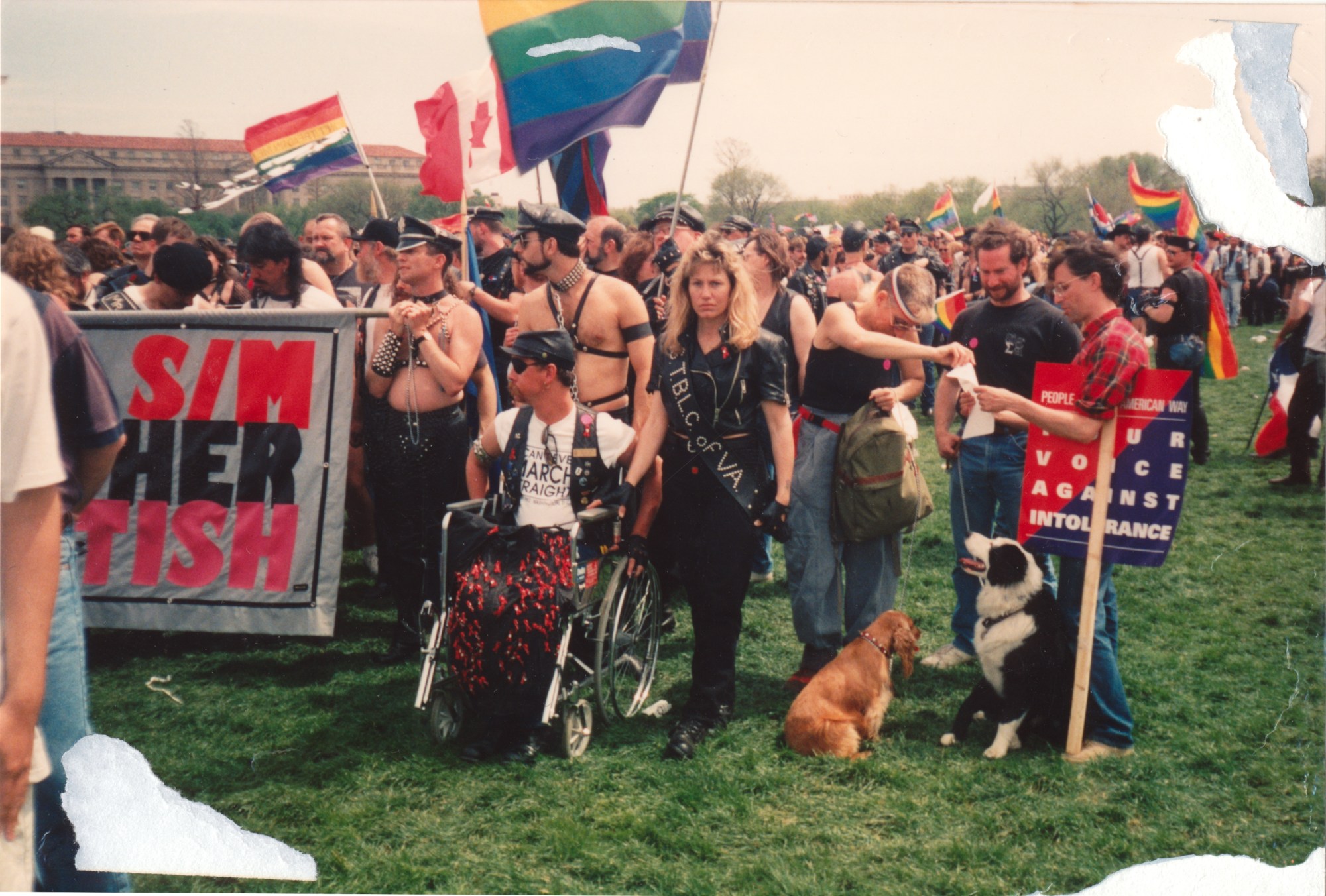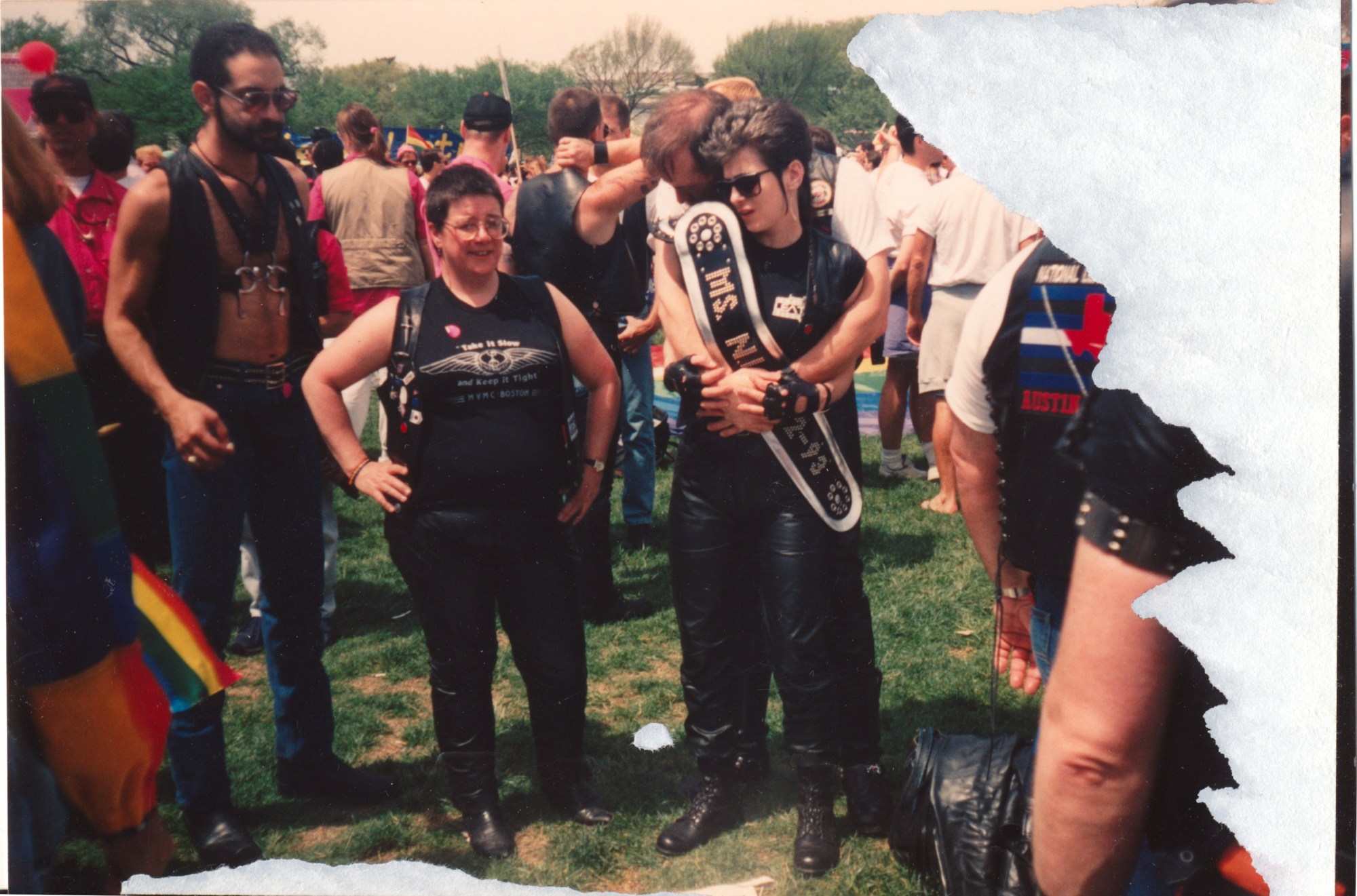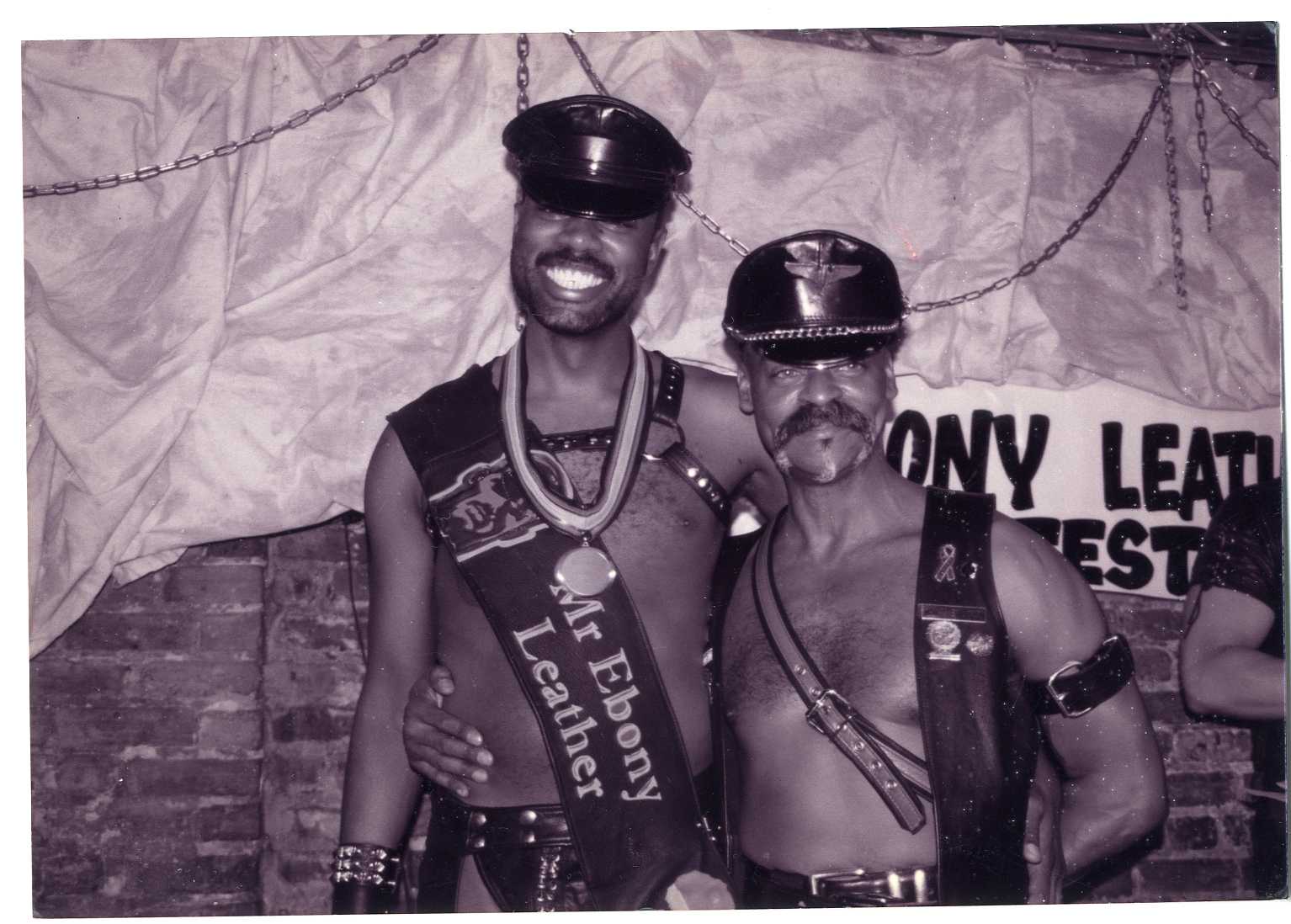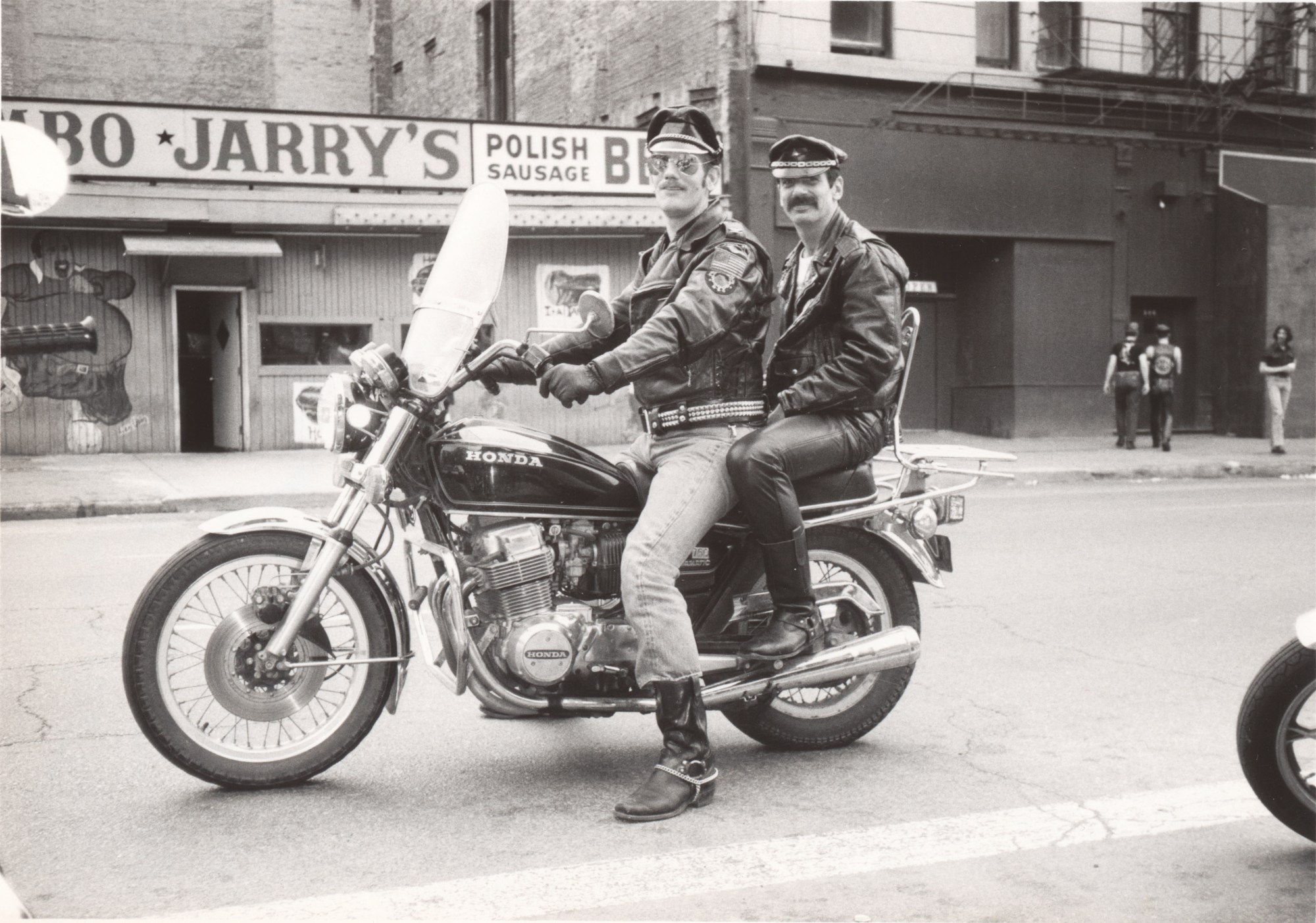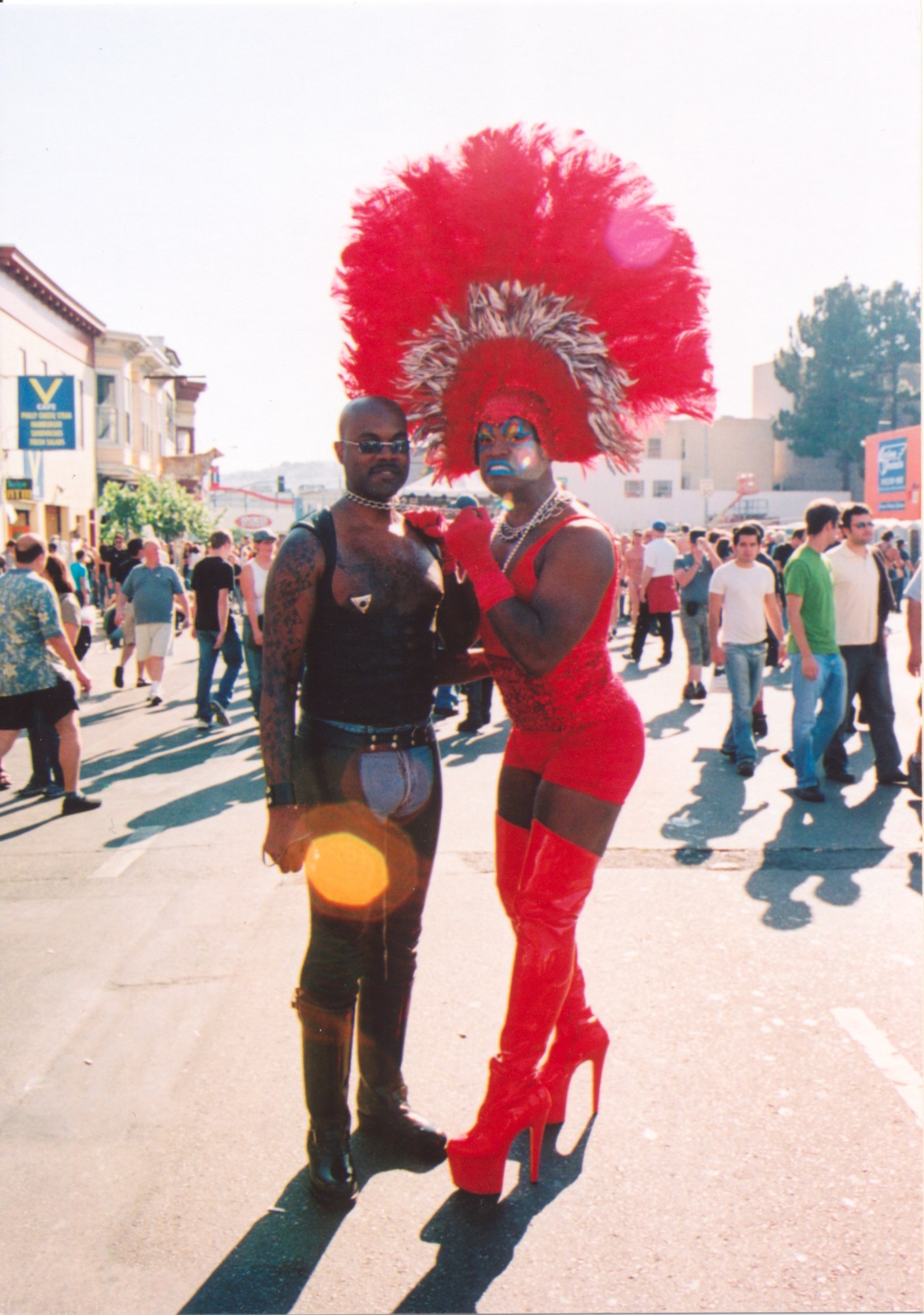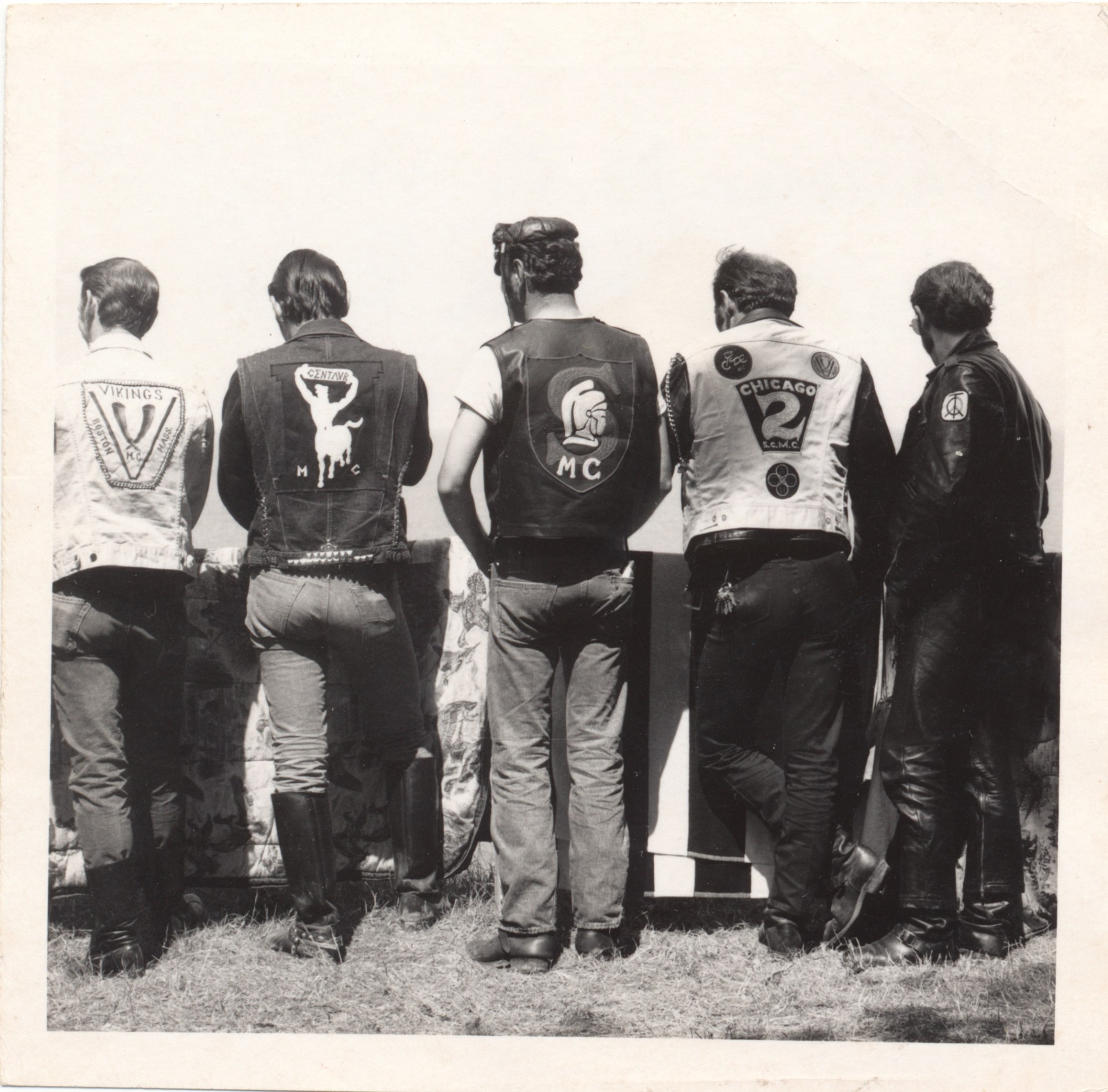On a recent Saturday, Gary Wasdin, the recently installed executive director of the Leather Archives & Museum, was tucked in away in the back corner of the Hyatt Regency lobby in Washington, D. C. To reach him, one had to squeeze through a few men wearing nothing but jockstraps, skirt around a group in leather harnesses paired with blue jeans, and step over a “pup” or a young, lanky guy dressed in a neoprene puppy suit groveling at someone’s feet. This was high noon at Mid Atlantic Leather 2018 on Capitol Hill.
“Leather has become this large umbrella that has always had this connection to sex and sexuality although it’s not even about sex for everybody,” Wasdin told i-D at the event, referencing the fact that some get into the subculture for ideas around hypermasculinity as opposed to intercourse. “It’s such a huge umbrella that sort of stands for family, safety, and being yourself.” Under that banner, leather has become synonymous with the fetish and kink communities as a whole, encompassing everything from the pup community to bondage and rubber and more. But the effect of that community, and its legacy, is still being felt in the larger queer community today.
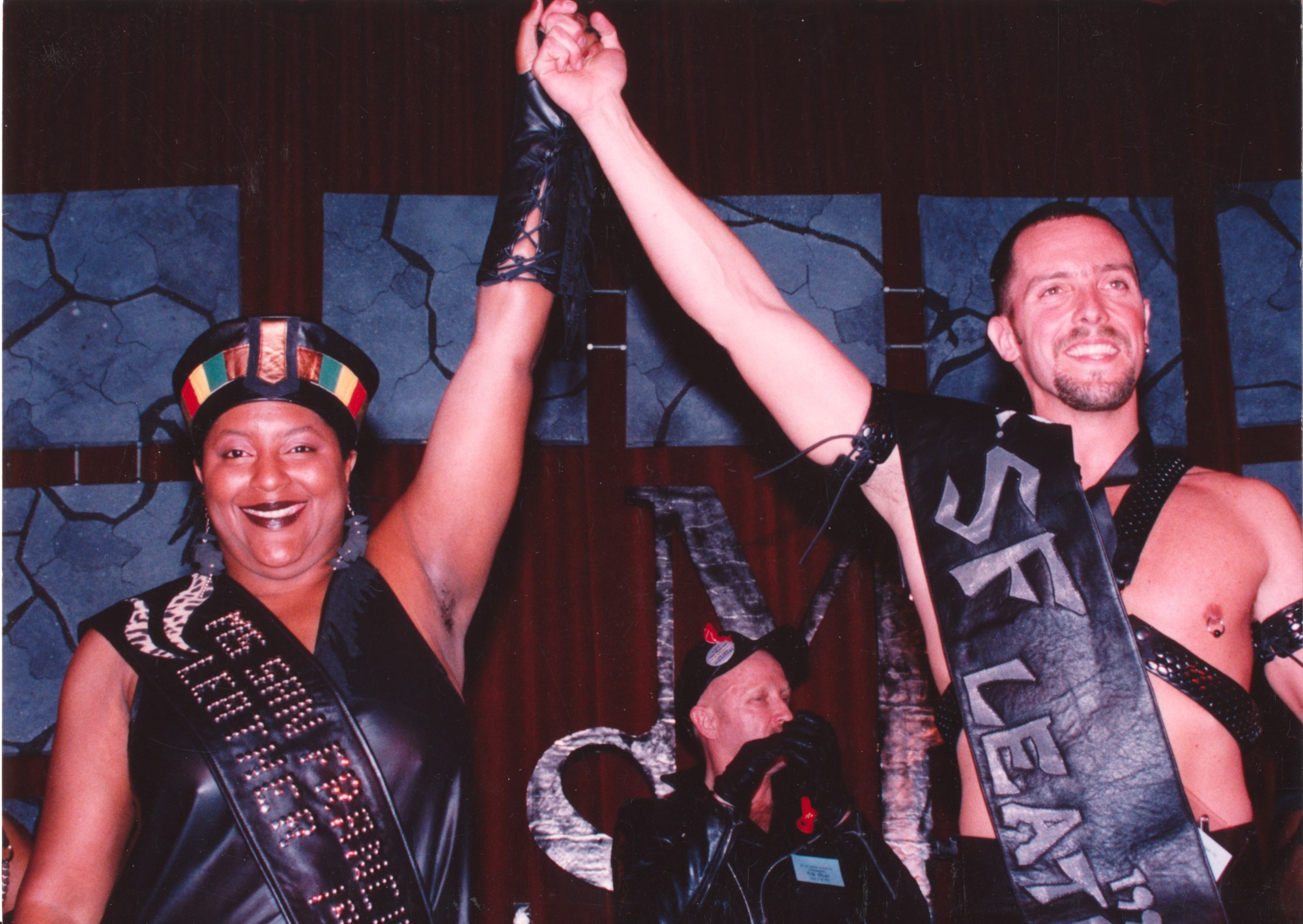
The leather community got its start in the 50s in the wake of World War II. In a story told in part in 2017’s Tom of Finland film centered on the artist Touko Laaksonen, gay men returned to their home countries and cities having experienced things at war that changed them. As they went to assimilate back into society at large, they found themselves at odds with what was happening.
“It sounds weird to say that there was a ‘gay culture’ back then but [the leather community] sort of started as a reaction to the feminized style of gay culture at the time,” Wasdin explained. An aesthetic that married the military with the biker club style of Marlon Brando in the 1969 film Easy Rider began to foster a look that began to come to maturation in the 70s. In bars like Chicago’s Gold Coast, regarded by many as the first leather bar started in the 50s and New York’s The Eagle, which has turned into one of the largest names in gay bars, that look turned into community, identified most notably by Laaksonen’s work. In last year’s film, jokes were made about “motorcycle clubs with no motorcycles.” This was the beginning of the leather community. As time progressed into the 80s and 90s, what was once a “white gay male” space diversified, welcoming in not only people of color but women and a variety of sexual identities.
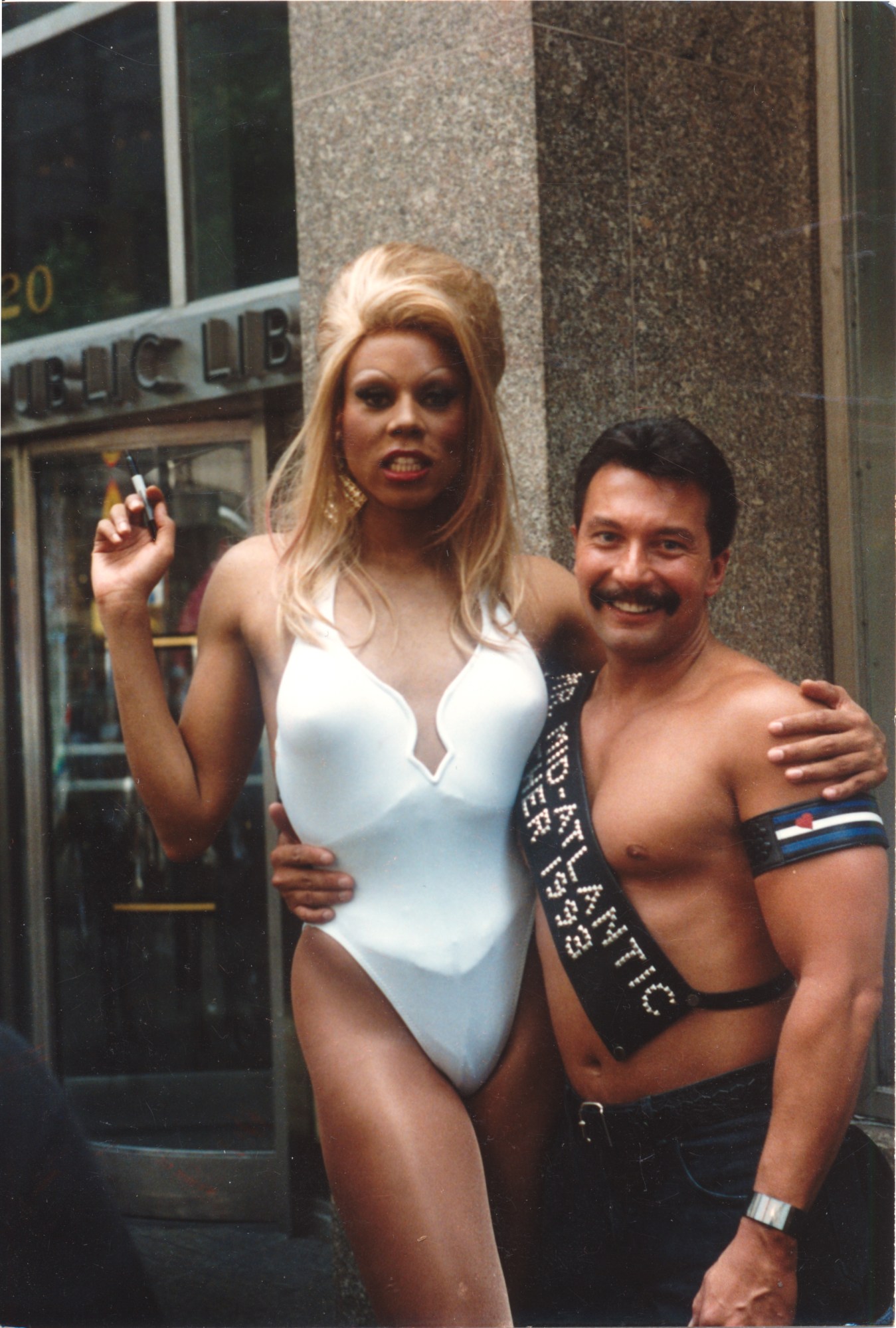
But this community quickly became about much more than just a place for the members to explore their kinkier sides. A circuit of titleholder competitions started up, the largest still running being International Mr Leather, begun in 1979 by Chuck Renslow and Dom Orejudos. Renslow also went on to start the Leather Archives, headquartered in Chicago. In addition, when the AIDS crisis began to crash through these chosen families, the community reacted, organizing fundraisers for various people they knew personally affected as well as for HIV and AIDS research at large.
“The drag and the leather community are the number one contributors to HIV and AIDS research,” Martel Brown, Mr. Mid Atlantic Leather 2017 said in an interview. “We are partially the reason why Truvada and PReP exist.” Truvada is a one-pill-a-day version of PrEP which can be used to prevent HIV transmission.
But the leather and fetish communities also did more than just raise funds and give their time.
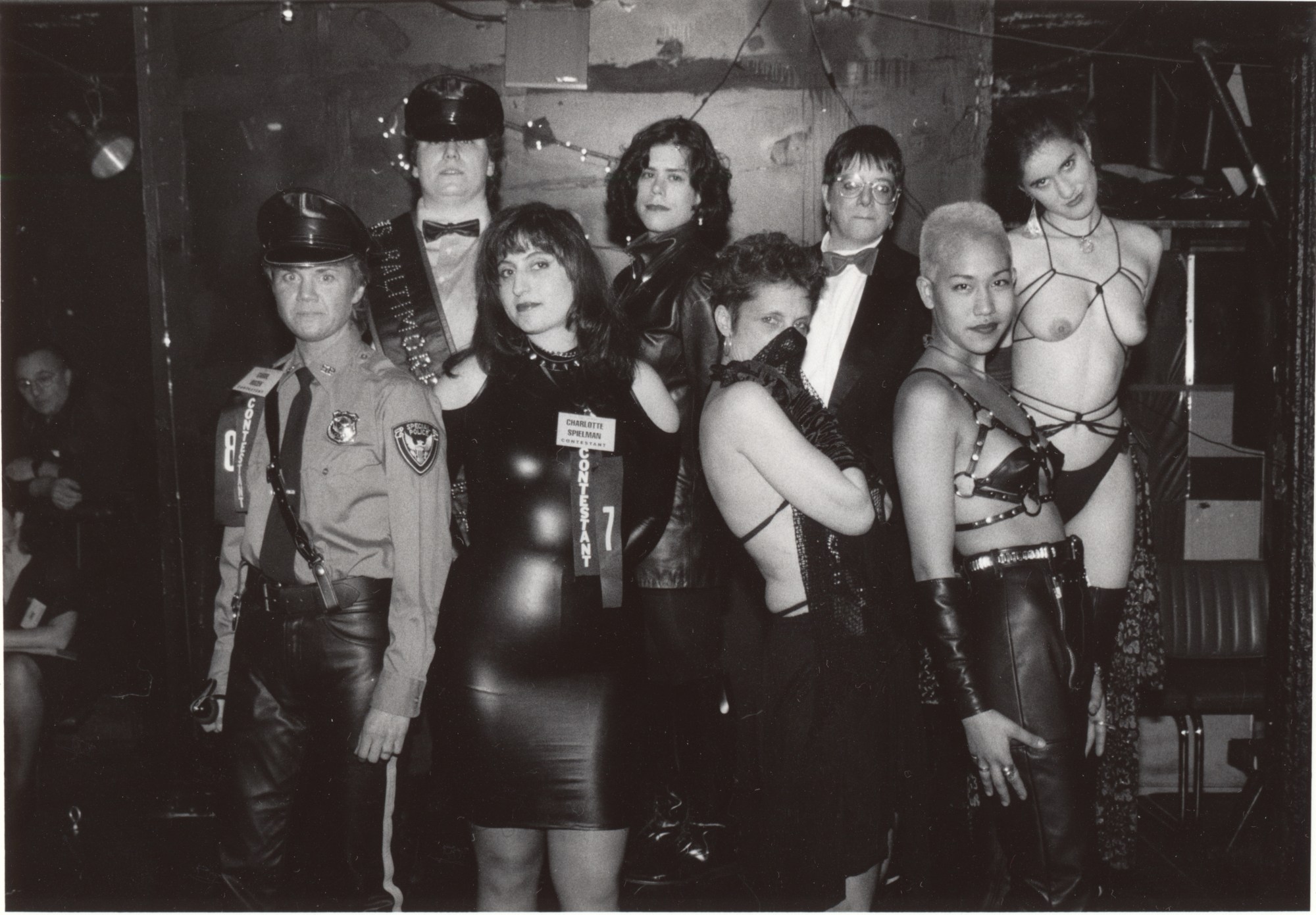
“Through the AIDS crisis the leather community was both affected personally by that but they were also there in order to step up but in a way to also not stop having fun,” Wasdin explained. “Everyone had a part to play — the drag community, the lesbian community — but the message from the leather community was to keep having sex. And to enjoy life.” Laaksonen’s work referenced this too, beginning to incorporate visible condom usage into his explicit pieces.
“One of the things I’ve read about quite often, particularly on the kink side of things, is that a lot of the things is that were fetishes and that were interesting in this community, you quite frankly couldn’t get HIV from,” Wasdin continued, referencing kinks like fisting, flogging and bondage. “The community really stepped up during that time saying ‘Hey there’s a whole lot of other things we could do or could be enjoying that don’t involve physical intercourse.’”
That sex positivity lives on, hand in hand with the philanthropic. Last year, MAL weekend raised over $80,000 which they gave away in grants. This year, their goal was $100,000 and they are expected to surpass it. But it goes beyond money.

“I lived in Omaha Nebraska for a while and even in their smaller competitions for their Mr Nebraska Leather, the winner, there’s an expectation that comes with that,” Wasdin explained. “When they run for these competitions they have these causes they champion that require volunteer hours and financial resources and brings visibility. That long history is very much a part of what we do as a community to help and support others.”
Case in point, when John-John Punki served as Mr Eagle NYC 2017, he hosted events and spoke out about body positivity as well as issues pertaining to the trans community, going so far as to even raise money for that community. Brendan Patrick, Mr Maryland Leather 2018, aims to bring attention and consideration to those in alcohol recovery while planning leather events and will raise proceeds for a local men’s halfway house. Even Gerard Turner, who was crowned Mr MAL 2018 this weekend, has been the chair for Code RED, a fundraising event supporting the fight against HIV and AIDS and the stigma associated with it, for the past four years. During his title year he hopes to do some work related to cancer as he is a survivor himself.
These title holders are present in communities all over the world, continuing the work of the community that allowed them to be their truest selves.
